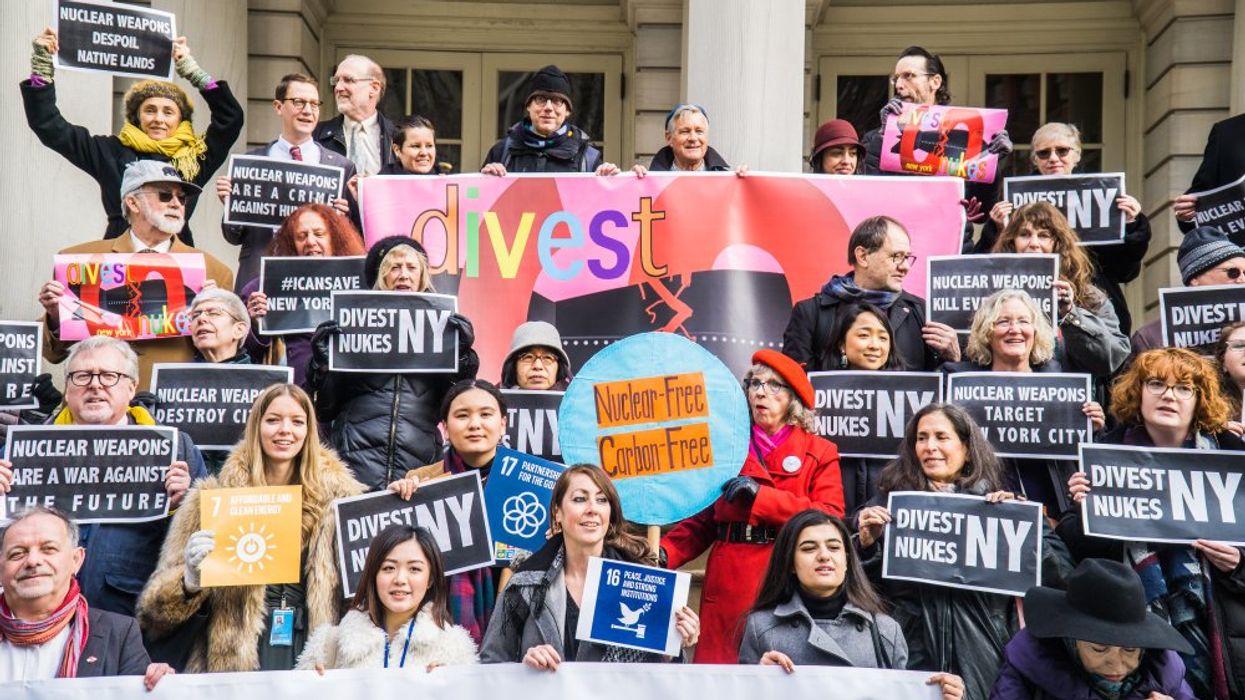Global nuclear weapons stockpiles grew as spending soared in 2022: report


For decades, no-nukes activists have been warning that modern nuclear weapons are capable of inflicting much greater damage than the bombings of Hiroshima and Nagasaki under President Harry Truman in August 1945 during World War 2. Historians have estimated the initial combined death toll from those attacks to be at least 120,000 — a number that, according to activists, would pale in comparison to a wider nuclear conflict using today's much more advanced weapons.
The anti-nuke movement of the 1970s and 1980s argued that if World War 3 was fought with nuclear arms, World War 4 would be fought with sticks and stones. But in 2023, nuclear arms, according to reporting in Japan Times and The Guardian, are becoming more plentiful — not less.
In an article published by on June 12, Japan Times' Gabriel Dominguez emphasizes that spending on nuclear arms has soared.
READ MORE: Lukashenko promises 'nuclear weapons for everyone' who joins Russia/Belarus alliance: report
Citing data for 2022 from the International Campaign to Abolish Nuclear Weapons (ICAN), Dominguez reports, "The nuclear-armed countries — the United States, Russia, Britain, France, China, India, Pakistan, North Korea and Israel — spent almost $83 billion on the weapons and related systems last year, of which the private sector earned at least $29 billion…. Despite not increasing its arsenal, the U.S. alone spent more than all the other nuclear armed states combined — $43.7 billion — while Russia, which has a comparable stockpile, spent 22 percent of what the U.S. did, at $9.6 billion, according to ICAN. China spent just over a quarter of the U.S. total, at $11.7 billion."
Meanwhile, in an article published on June 11, The Guardian's Daniel Boffey draws on data by the Stockholm International Peace Research Institute (SIPRI).
"At a time of both deteriorating international relations and the escalation of nuclear saber-rattling," Boffey explains, "there are now said to be an estimated 12,512 warheads globally, of which 9576 are in military stockpiles ready for potential use — up 86 on a year ago. The rise brings to an end the period of gradual decline that followed the end of the Cold War. (SIPRI) suggested 60 of the new warheads were held by China. The other new weapons are attributed to Russia (12), Pakistan (five), North Korea (five) and India (four)."
Boffey notes that 3844 of those 12,512 warheads are "deployed with missiles and aircraft."
ICAN and SIPRI's figures come at a time when authoritarianism in on the rise around the world.
Russia is at war with Ukraine; the Taliban is in control in Afghanistan; the People's Republic of China has cracked down on civil liberties in Hong Kong; and North Korea is infamous for its human rights abuses. In the U.S., the MAGA movement has shown a refusal to accept election results it dislikes.
According to SIPRI's Dan Smith, "We are drifting into one of the most dangerous periods in human history. It is imperative that the world's governments find ways to cooperate in order to calm geopolitical tensions, slow arms races and deal with the worsening consequences of environmental breakdown and rising world hunger."
READ MORE: Bipartisan U.S. bill aims to prevent AI from launching nuclear weapons
Find Japan Times' report at this link and The Guardian's article here.